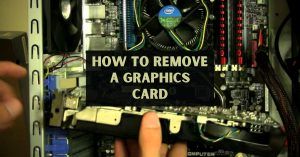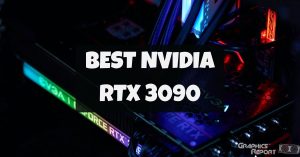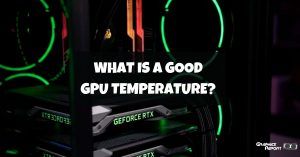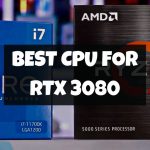
Your GPU will need more power to run graphically intensive games and software. Your graphics card’s temperature may therefore rise over time. Your GPU’s fans will turn more quickly to cool the graphics card. The majority of current graphics cards have this common phenomenon.
However, suppose you observe an unexpected GPU temperature increase without running demanding software or games. In that case, your graphics card is overheating, and you need to address this to stop additional harm from occurring to it. One or more sources may cause the GPU to overheat. So, to troubleshoot the issue, you must go over each one.
How To Monitor GPU Overheating?
The Windows Task Manager can inform you how hot your GPU is, making verifying it simple. It’s a great way to see temps without downloading anything.
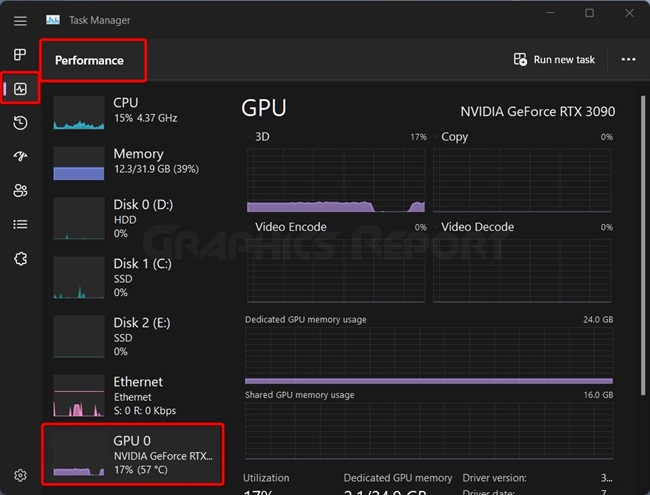
Choose the Performance tab while pressing “CTRL | SHIFT | ESC”. GPU left. The “Task Manager” is handy, but if you use Windows or Linux, you may use an “Open Hardware Monitor” to check temperatures.
This software can show you system and GPU temperatures. Start Hardware Monitor once downloaded. GPU metrics are included, although there are many to consider. The Open Hardware Monitor can measure the temperatures of each GPU core.
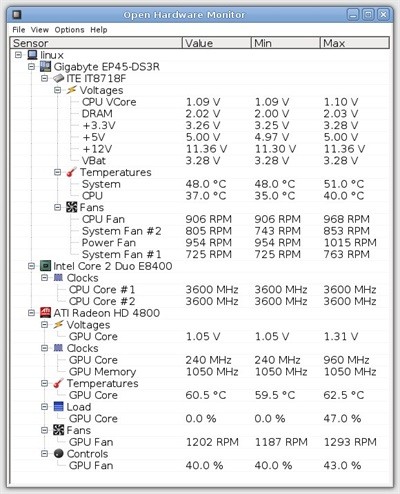
These two approaches are great for measuring GPU temperature but not much more. If you want a temperature tracker with more capabilities, check to contact the business that produced your GPU. They may offer specialized software that can help.
For Ryzen GPUs, AMD Ryzen Master is a great tool. It shows how hot your card is and provides resources to overclock your GPU. MSI Afterburner compares. As you might expect, it works better with an MSI-branded GPU, but other GPUs work too.
With MSI Afterburner, CPU speed, card voltage, and fan speed can be changed. Check if your GPU has its own software before choosing a brand.
How Do I Know If My Graphics Card Is Overheating?
Modern GPUs are equipped with technology that keeps the card cool while operating at 100% of its capacity. This generally happens when you force your GPU to utilize most of its resources, generating more significant heat when you push for a higher resolution. The temperature sensors on your graphics card signal the GPU fan to run harder to cool off your card as it gets hotter.
Some indications of overheating your graphics card include loud fan noise, screen artifacts, and graphics-related issues. However, the same symptoms can also occur if your GPU hardware is broken or your graphics card is outdated.
Artifacts
Randomly generated permanent artifacts, red/green checkered tiles, etc., can be produced by an overheated GPU. This could indicate an overheating card or a problem with the GPU, display connectors, etc.
Computer Blue Screen
Another indication of an overheating GPU is blue displays. Even while temperatures were low, some users reported experiencing numerous blue screens during extended gaming sessions.
In those circumstances, ensure all your fans are configured to boost performance rather than prevent noise. You can also check your software settings and driver updates.
Failed Graphics Card
If your software suddenly freezes and you receive a notice claiming that your graphics card or driver failed, check to see if your drivers have the most recent updates. If they are, your graphics card may be overheating.
Game Trouble
While playing video games, the GPU could occasionally render visuals incorrectly. This occurs when the card is incompatible with the game’s software. However, a fading video card eventually manifests as a minor graphic flaw.
You might see odd screen glitches, flickering, off-color pixelation, or random artifacts in various places on your screen.
Related: 60+ games that support SLI (definitive list)
High Fan Noise
Verify whether any software has been used to cap the fan speed. There is a direct negative effect on cooling when one or more of the cabinet’s fans have limited rotations per minute (RPM). As a result, your GPU and other parts, including the CPU, may become warm while idling.
How To Fix GPU Overheating In 2023?
In the beginning, monitor your body’s temperature. Keep an eye on them to see if any single game or application is causing them to start to climb. Reduce the game’s settings if your GPU overheats during games or only specific programs.
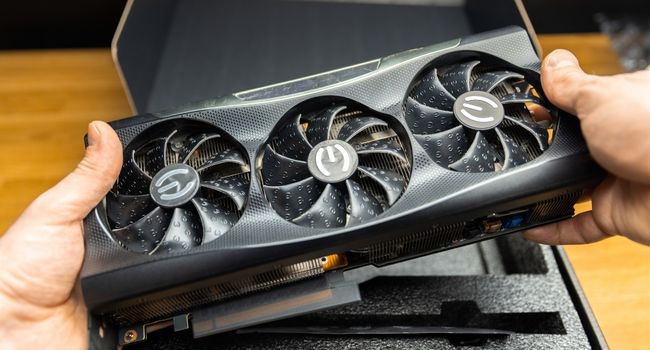
Immediately reducing the graphical settings in games can significantly reduce my GPU temperature. Before considering graphics card damage or repairs, undertake necessary computer maintenance if it overheats during routine operations or while inactive.
#1: Use A Water Block To Reduce GPU Temperature
This cooling technique is simple; a cooling liquid removes heat directly from the graphics card’s internal parts. Although this is undoubtedly the most effective cooling technique of the three, it is also the most costly and occasionally challenging to set up.
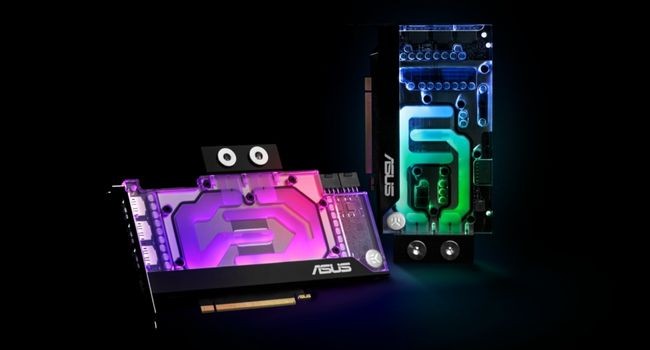
Ensure your PC case is roomy before applying a water block to avoid any heat buildup. Additionally, setting up a liquid cooler on your GPU is complex. The current heatsink and fans must be torn out and replaced with ones compatible with a liquid cooling kit.
If you have a cheap graphics card, I do not advise you to go this route. Liquid cooling is an excellent choice if you have a high-end graphics card that you really don’t want to throw away.
#2: Upgrade Outdated Drivers
Although it may seem strange, the drivers for your graphics card contain instructions for controlling the fan. Updating outdated drivers might assist the GPU fan in operating at the optimum speed to reduce increasing temperatures and prevent GPU overheating.
#3: Improving Poor Airflow
Your computer’s interior ventilation is essential in preventing GPU overheating. In some circumstances, there is simply insufficient space for air to flow, which might lead to overheating of specific components. For guidance on where to place the fans on your graphics card, look at them.
#4: Overclocking
The GPU cores generate more heat the faster they are clocked. Therefore, if your GPU is overclocked, think about lowering its clock speed. Try running your GPU under underlining settings to see if the issue is fixed or is still heating up.
#5: Clean The Dirty Fans
To help your GPU fans remove heat more efficiently, clean them thoroughly, ensuring no lint or dirt remains. Cleaning fans safely involves using an air compressor or rubbing alcohol on the fan blades. Additionally, before reinstalling it on the computer, ensure it is scorched.
#6: Stressed GPU
If fixing the graphics card was unsuccessful, there can be an issue with another component of your computer. You can stress-test your CPU or run RAM tests to ensure they operate correctly.
However, if the computer still doesn’t keep cool after the newly repaired GPU is installed, you might eventually need to have the entire device serviced.
#7: Old or Incompatible GPU
In order to troubleshoot hardware, it’s a good idea to replace any suspected defective components with new ones. You can determine whether the issue is with the GPU or the system by installing an old GPU into your computer and observing whether it responds similarly to your present one. You’ll then be aware of the component that needs to be fixed or replaced.
#8: By Applying Paste on a Dry Thermal Paste
Depending on the caliber of the paste your GPU has, thermal paste does not lose its effectiveness after a few months and can last up to ten years.
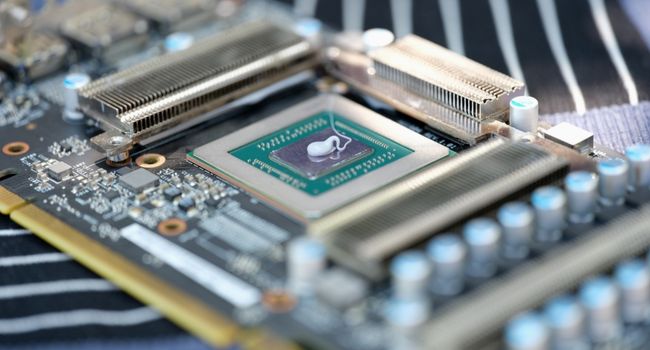
To improve efficiency, it will be helpful if you continue to think about changing the thermal paste on your GPU every three years. However, this is a difficult task.
#9: By Adding A Good PSU To Recover Inadequate Power
Your graphics card needs the power to function correctly in terms of specifications and quality. Insufficient power is destructive for the hardware within a computer and can lead to various faults in addition to overheating. It will help if you switch to a better-capable, higher-quality power source.
My Final Thoughts On It!
Now that you know some of the specific and all too frequent causes of a heated GPU, you will be better prepared to handle this situation should it arise again. However, keeping the interior of your computer case clean is essential to maintaining happy and healthy systems.
If you utilize a high-quality compound, you will not need to replace the thermal paste frequently, and airflow problems only require one time of repair.
Also, remember that your GPU is built to operate hot and under strain; as long as you don’t continuously exceed the manufacturer’s suggested temperatures, your graphics card will last a very long time.


